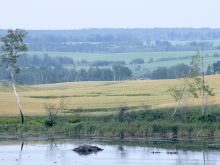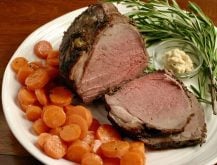As told to Judy Thorsteinson and Wanda Lambeth
It was 1934, the world was deep in the Great Depression and farming was a day-by-day struggle to survive. The draft horses were the lifeblood of the farm.
John Arthur (Art) Gray and his older brother Billy were in charge of the horses on their father Tom’s farm near Bankend, Sask. Art was 16 and small for his age – folks used to think he was 12 or 13. He had to run faster and work harder to keep up with his brother Billy, two years older and usually the boss.
Read Also

Rural Manitoba resources slim on natural disaster planning
A study from Brandon University’s Rural Development Institute has found that many rural and small municipalities don’t have the staff or resources to make formal climate plans against natural disaster.
Tom expected his boys to treat the farm’s horses like family.
The horses were fed slough and wild hay in the morning and oat straw at night until March and then good hay and grain to get them in shape for the spring work.
Currycombs were used extensively in early spring to get rid of their old hair. The driving teams were fed good rations all winter because their work included transporting the family to church, neighbours for visiting and town to sell cream and eggs and pick up supplies.
Each morning at the Gray farm in east-central Saskatchewan during the spring to fall, Art and Billy would bring the Clydesdales and Percherons from the barn and assign them their tasks.
Some would get the day off, a luxury that was alternated to ensure each horse got enough rest. There was a maximum five-horse hitch for heavier work such as plowing and harrowing.
A team of two horses could handle cutting and hauling loose hay. Art used Laddie, a bay gelding that was faster and lighter, to round up the cattle.
Art remembers falling with Laddie on greasy ground and the pommel (saddle horn) landing on his foot. He continued with his daily chores on one foot for three weeks.
It wasn’t until he enlisted in the army in the Second World War that he learned he had an old break in that foot.
One of the hardest jobs for the boys was hauling grain to town. It was a 22 kilometre trip to the delivery point at Leslie, Sask., from the farm and the wagon held 60 bushels. The grain would get shovelled into the front of the wagon from the bin on the farm and then shovelled again to the back of the wagon.
The boys or their father would return to the bin and start again until the wagon was full.
When the spur line was expanded to include the nearby hamlet of Bank-end, the trip was shortened to a more tolerable 9.5 km.
It was backbreaking labour followed by a long trip on rutted roads but the boys enjoyed their outings to town and the welcome break from the fields.
Today Art and Billy are in their nineties . Hard work has meant longevity for both men.
Art shakes his head and smiles when asked what he thinks of the changes in farming.
He wouldn’t trade his memories of working with his beloved horses for anything.














